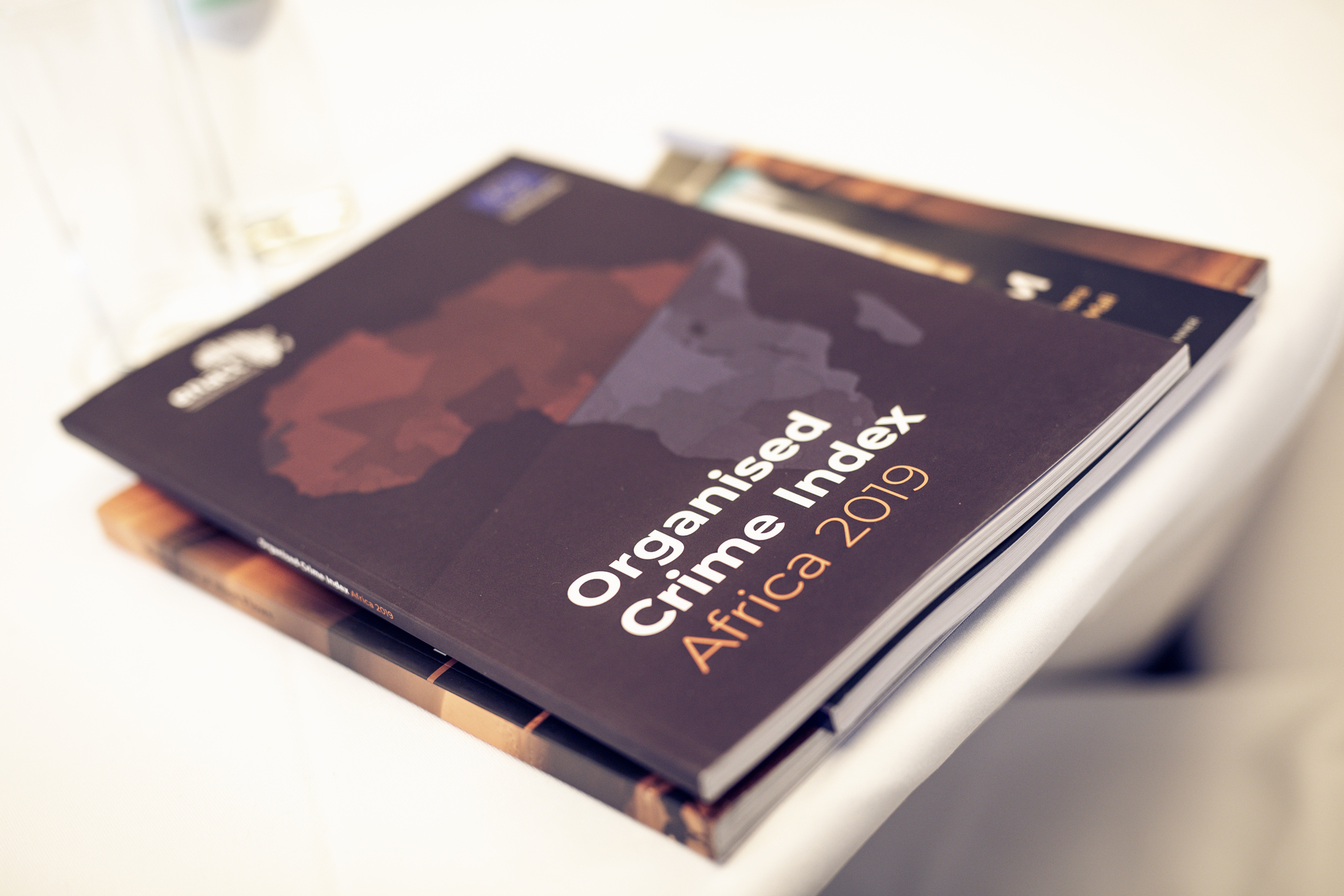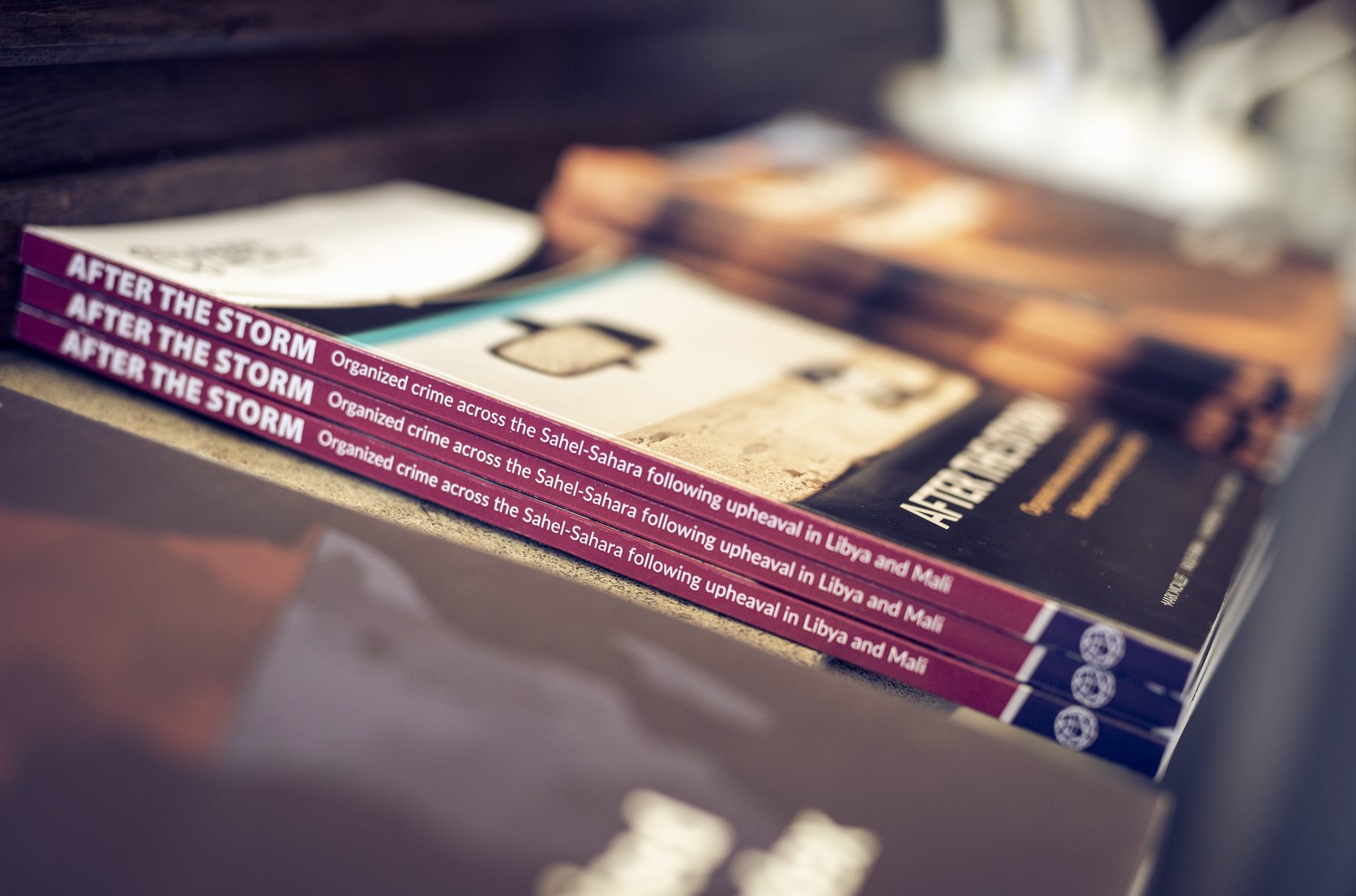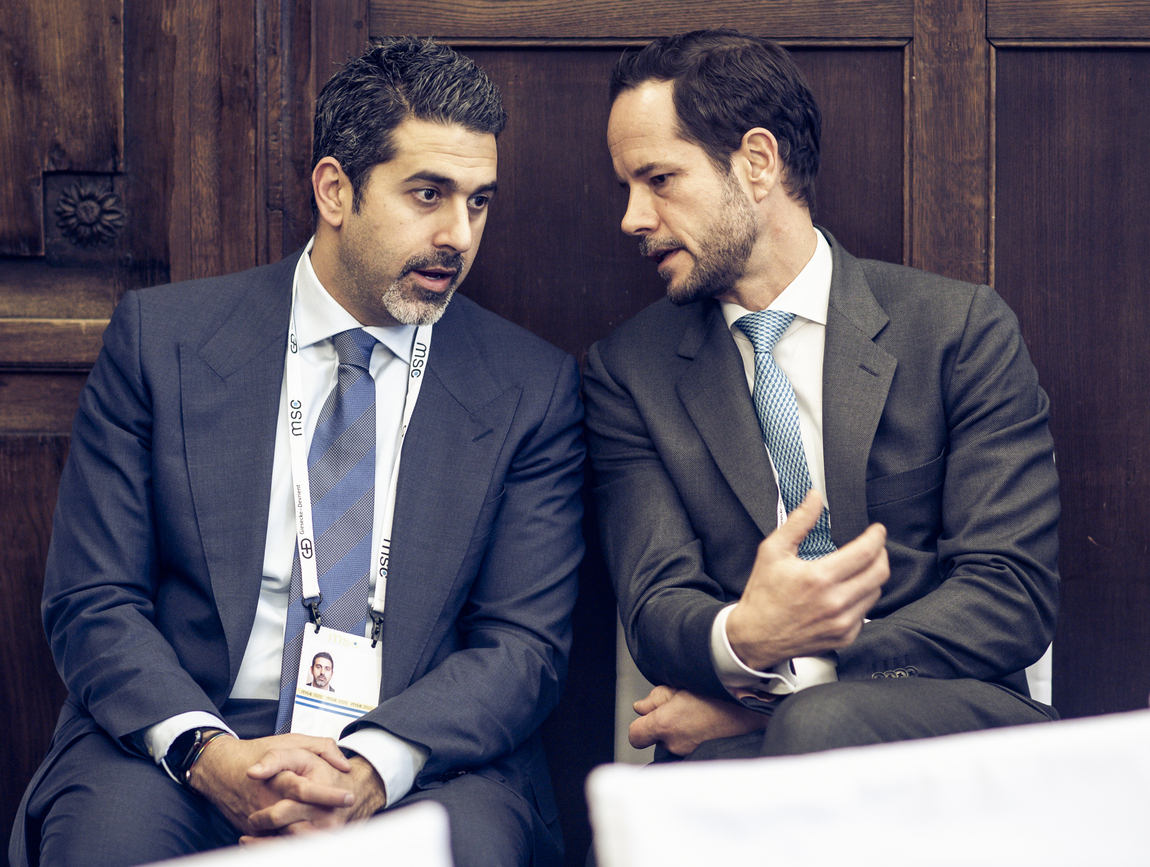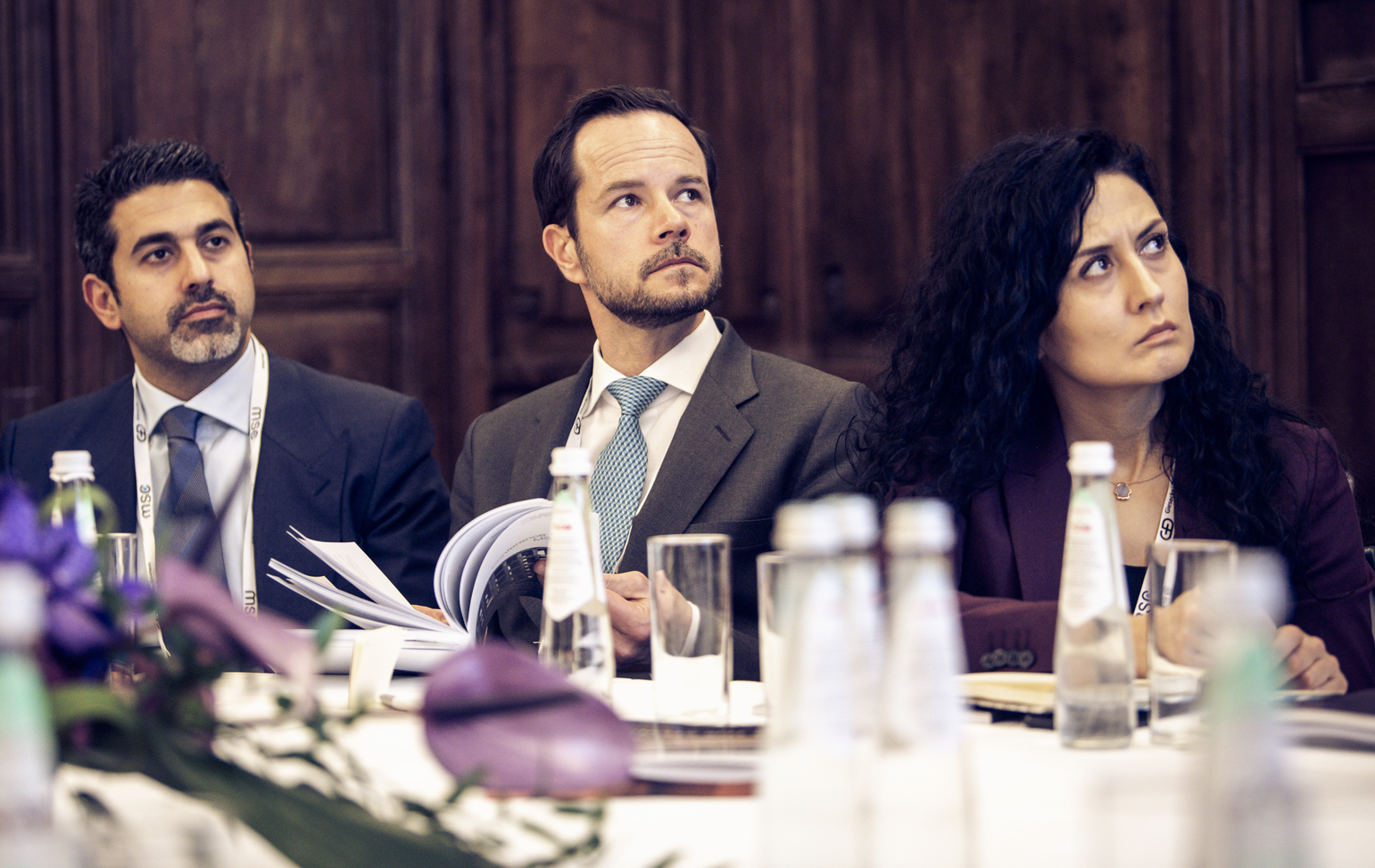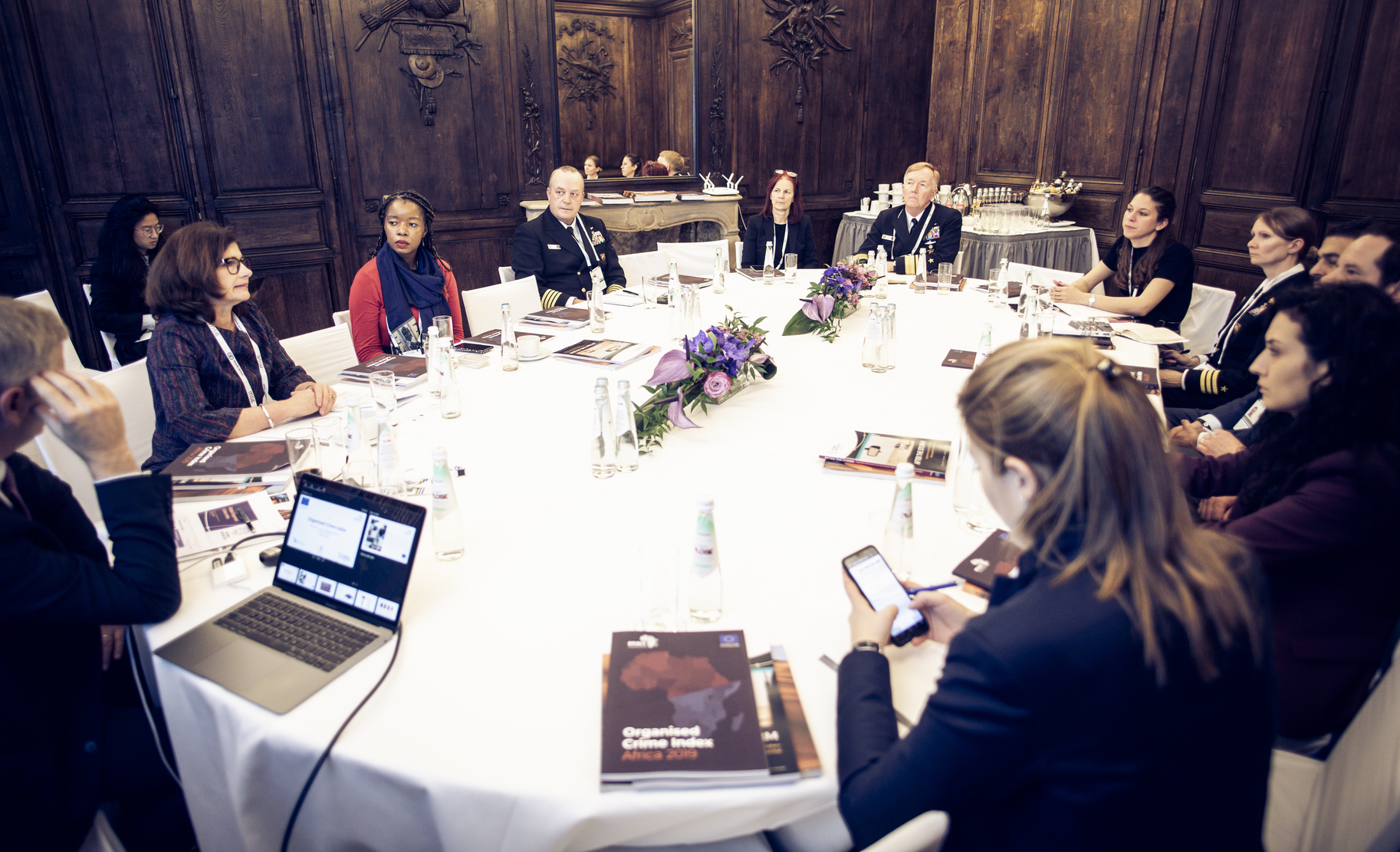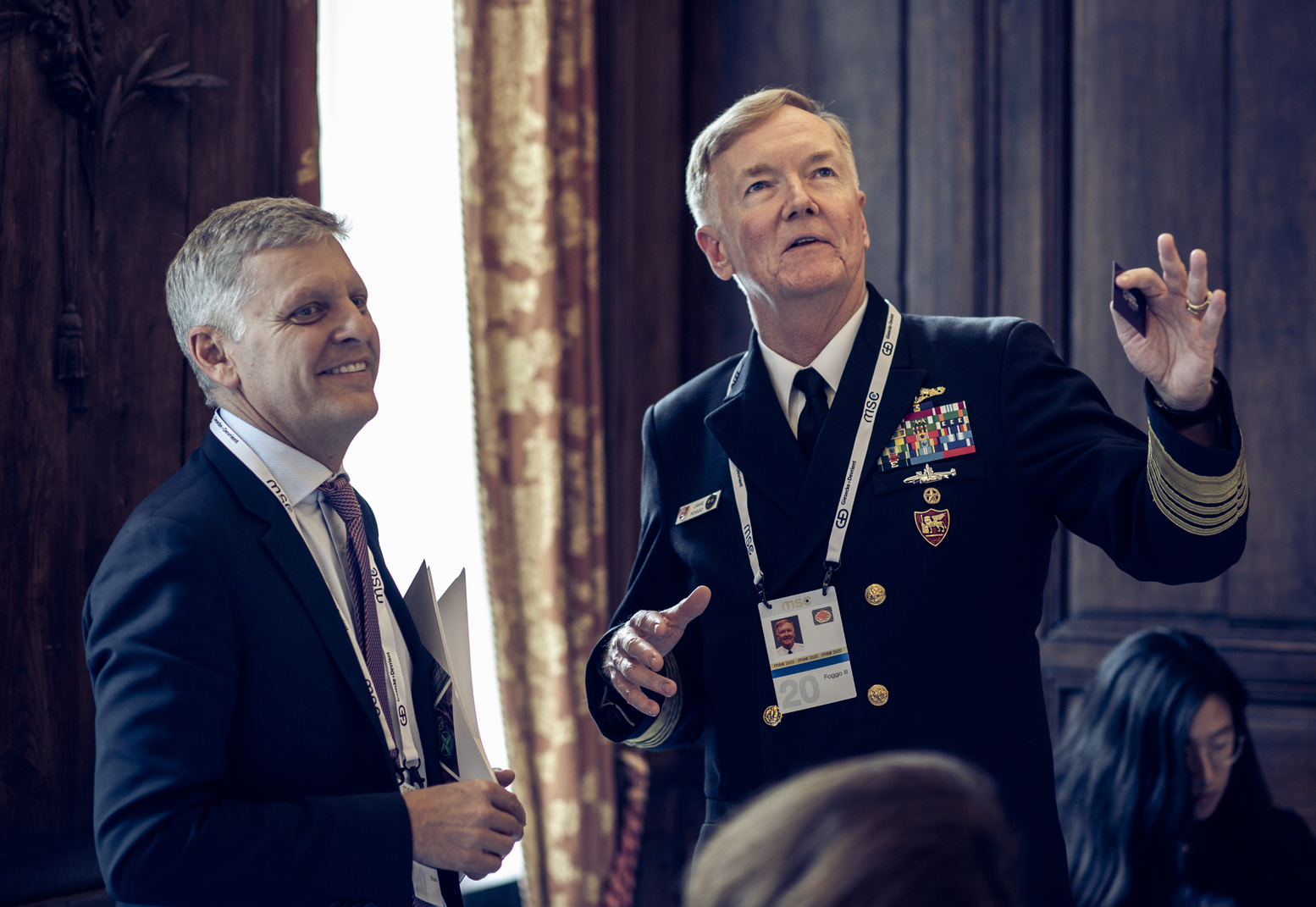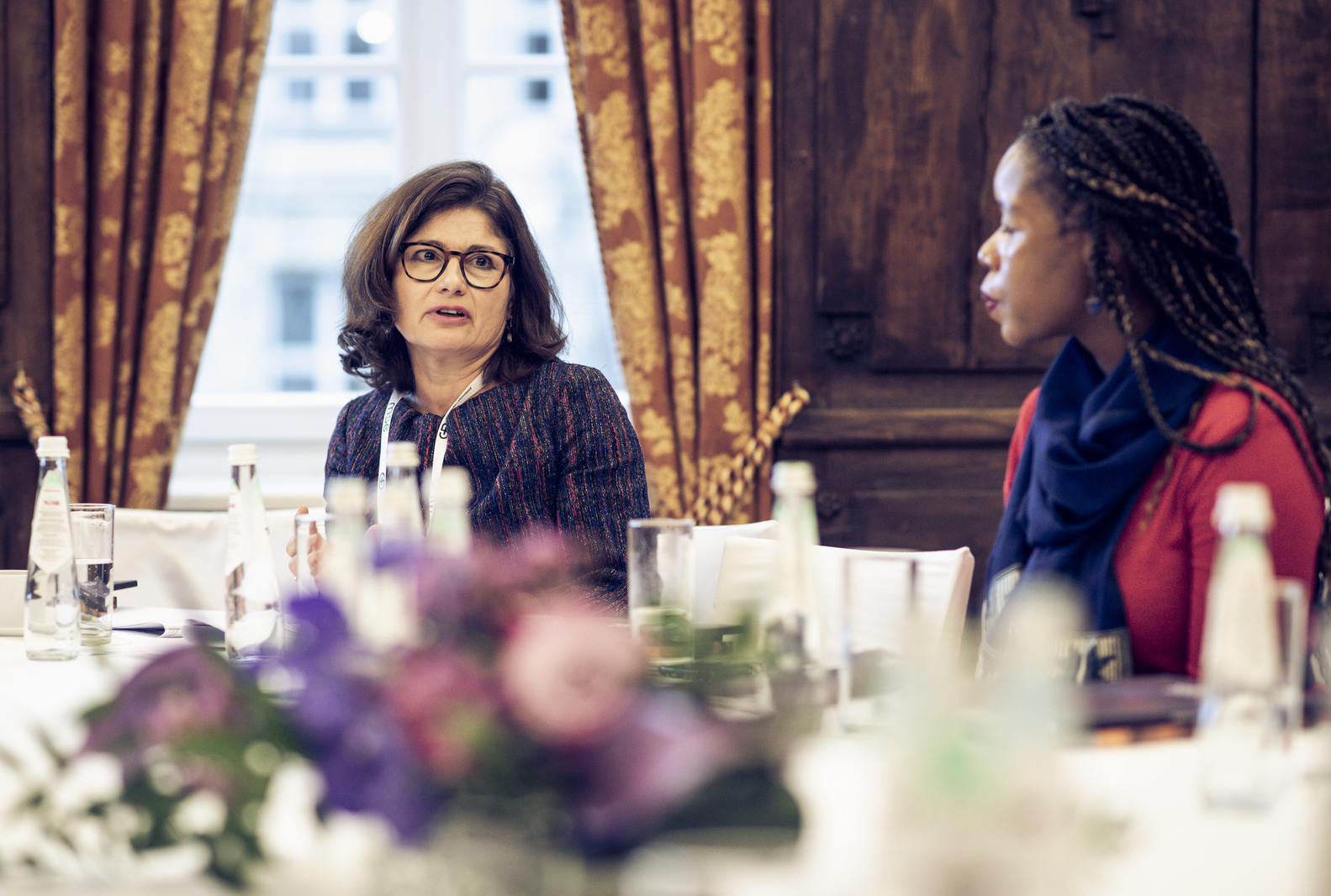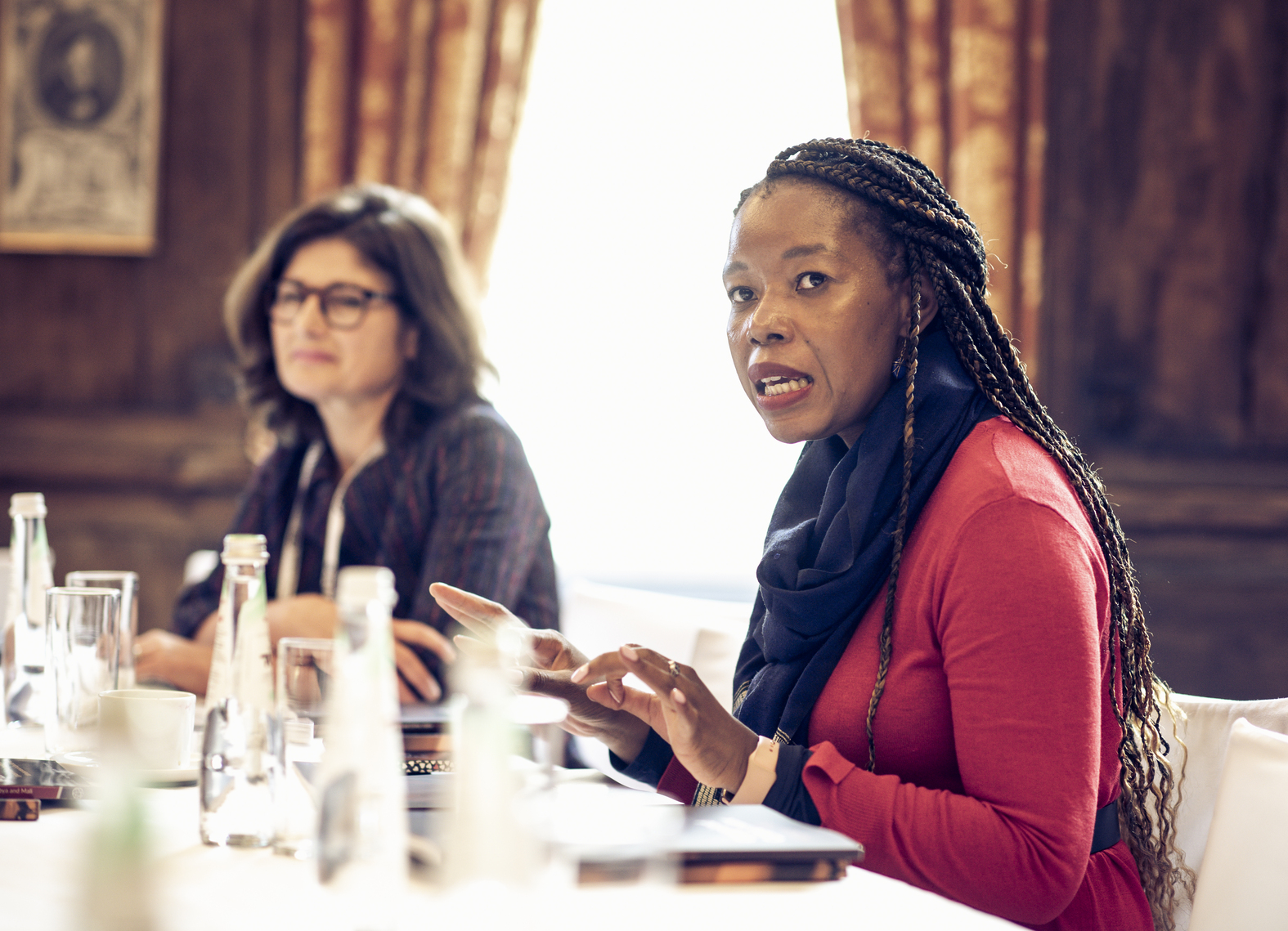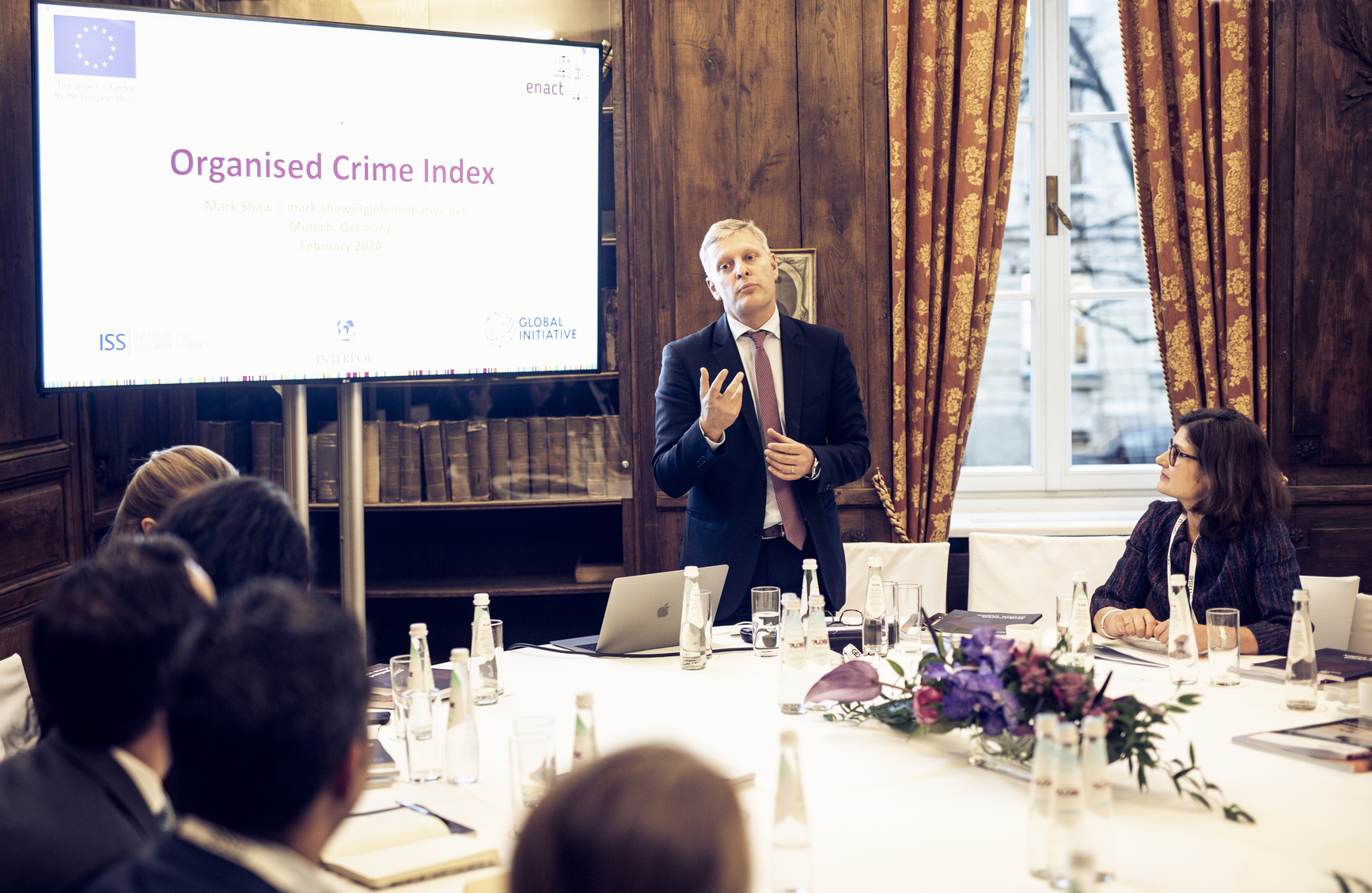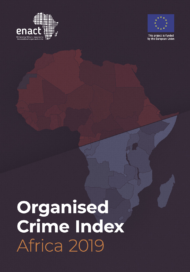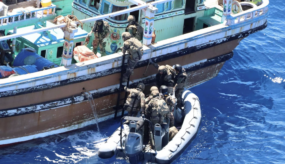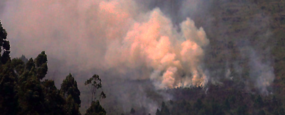Posted on 27 Feb 2020
In September 2019, the Organized Crime Index Africa 2019 was launched by the ENACT research consortium. This, the first-ever index to measure organized crime, provides a multidimensional assessment of organized-crime markets across the continent and countries’ levels of vulnerability. Since its publication, the Index has been presented at various international conferences, including in the fringes of the 74th Session of the UN General Assembly, and to national authorities across Africa. It has generated a substantive international discussion on how to measure organized crime, the drivers for criminal markets in different contexts, and how states and societies can better respond to the threat.
Presenting the Index at the Munich Security Conference 2020 was another important opportunity to discuss the findings of the Index with
a high-level audience. At the conference, emphasis was placed on the
methodology and applications of this tool, given that its scope is currently
being extended to include, in future iterations, all countries of the globe.
The discussion in Munich was preceded by inputs from Henriette Geiger of the Directorate-General for International Cooperation and Development of the European Commission and Ottilia Anna Maunganidze of the Institute for Security Studies, and a presentation by Mark Shaw of the Global Initiative Against Transnational Organized Crime. It was supported by the Division 223: Peace and Security, Disaster Risk Management of the German Federal Ministry of Economic Cooperation and Development (BMZ) through its related Sector Programme Peace and Security, Disaster Risk Management of GIZ.
Presentations and the ensuing discussion drew attention to how transnational
organized crime in Africa is as prominent as it is diverse, and how it occurs
regardless of the particular development challenges of individual countries,
the presence of conflict or a country’s geographic location. Its negative
effects on society, health and the environment undermine development efforts
and the potential for African states to achieve the targets set in the Sustainable Development Goals. Organized crime thwarts local economies, hinders trade and diverts
resources that could be dedicated to improve basic services.
Regardless of current levels of criminality, economics or governance
quality, many African countries display low levels of resilience to the threat.
Research for the Index has shown, for example, that state-embedded criminal actors
are present to a high degree across the continent. Furthermore, the findings
show that human trafficking and human smuggling, arms trafficking and the cannabis
trade are among the most prevalent criminal markets in almost every country on
the continent.
Understanding these underlying issues is necessary for policymakers and
other stakeholders to address organized crime effectively. As criminal actors
continue to transform how they operate and illicit flows become more complex
and dynamic, manifesting themselves in ways not seen before, new tools are
needed to respond to organized crime in Africa. The debate at the Munich
Security Conference reflected that the data and the findings of the Index can
be used in five key ways to engage with stakeholders:
1. The Index offers a platform to launch an informed discussion with
local governments.
Given its inherently clandestine nature, available data on organized crime
is very limited. In order to accurately capture levels of criminality and
resilience, the Index triangulated information from a range of sources and
supplemented this with expert assessment. Over the course of two years, the Index
was developed through a literature review encompassing more than 3 000 academic
articles, 1 300 policy reports and more than 8 000 news articles. It utilizes
49 underlying data sources and is informed by the expertise and input of more
than 200 contributors. The results rank countries both according to their levels
of criminality (composed of criminal actors and criminal markets) and
resilience to organized crime (composed of 12 components).
Nevertheless, it is important to recognize organized crime as a complex
phenomenon, one that cannot be completely reduced to a number or score. As
such, the Index serves as a standardization tool that complements other
research efforts. By sharing the results of the index, local governments and
other stakeholders can start to build on a joint understanding of organized
crime. There is value therefore in continuing to build the evidence base needed
to help inform policies countering organized-criminal activities and provide a
rich analytical tool to help inform the types of interventions needed. The Index
offers a model to do this.
2. The Index helps prioritize development aid and security assistance.
Indices are
global measures designed as policy directional tools. With limited development budgets, many donors need to prioritize their
engagement. The Index establishes a crucial foundation for policymakers and
stakeholders to identify key gaps and priorities, and gain an understanding of
the dynamics at play between criminality and resilience on the continent.
3. The Index serves as a comparative tool.
The Index allows users to compare not only criminality and resilience
dynamics on a national level, but also offers insights into trends, strengths
and weaknesses across the continent as a whole. Such comparative analysis helps
provide constructive guidance, so that policymakers can prioritize
interventions. While the current Index presents levels of criminality and
resilience for 2018, through future iterations, the tool will add value to
policymakers’ knowledge base by offering longitudinal analysis over time. This will
also improve the quality of the data and allow for a better understanding of
the underlying issues. As countries’ positions change and evolve over time, new
opportunities for engagement arise.
4. The Index helps to align development responses to organized crime
across the continent.
No state or community experiences organized crime in the same way. While
the circumstances that allow organized crime to flourish across countries vary,
a continental analysis shows general trends of criminality as well as where
efforts to combat organized crime have been successful. While responses to organized
crime must be tailored to the specific circumstances, it is important to
recognize organized crime as a shared problem across the continent. As such,
the Index encourages policymakers and stakeholders to work together in aligning
response efforts.
5. The Index helps to identify relevant stakeholders.
The data provided by the Index can be used not only to define what kinds
of interventions are needed, but also which kinds of criminal actors to target.
As mentioned, different countries have both different forms of vulnerabilities
and sources of institutional strength. Understanding the harmful impact of
organized crime to an individual country offers a way to engage with African
countries with a view to developing responses. Although state actors are
often seen as the primary parties in the drive to counter organized crime, the
situation becomes complex when organized-criminal actors are embedded in the
state.
A successful
model to counter organized crime cannot therefore entail solely a law-enforcement
response by the state. The Index provides the possibility for multifaceted
responses to organized crime through its data on a number of country resilience
components, from criminal justice and laws, to governance and the role of the
media and civil society, which strengthen and support local communities.
The Index identifies a variety of mechanisms to engage with civil-society
organizations, including the media. Taking advantage of a broad array of non-state
stakeholders in the collective response to organized crime helps to amplify
resilience where there is a gap in the state’s scope. The private sector also has a
key role to play, creating synergies and leveraging resources, if it can be
ensured that the provision of funds does not damage the
credibility and legitimacy of interventions. This way, capital channelled
through corporate social
responsibility programmes can increase knowledge and capacity through
interventions targeting organized crime and corruption.
In
conclusion, organized crime is a threat to global stability. So far, responses
to organized crime in Africa have not been able to keep pace with either the growth
or morphing nature of organized crime on the continent, and research has
revealed that African countries tend to display low levels of resilience to the
threat. The data analyzed in the Organized Crime Index Africa shows that over a
third of the continent is in a position of serious vulnerability to organized crime.
As
organized crime in Africa continues to grow and evolve, responses must be
framed to tackle the threat from a multidimensional perspective, and not only
from a governance, criminal-justice and security standpoint. The response must
also include non-state and socially-based parties. Yet, this year at the Munich
Security Conference this discussion was largely absent. In fact, even the topic
of organized crime appears to have declined in significance at international security
forums. The Index will add value to this important dialogue if it is widely
disseminated, shared and used to inform policymaking. This new analytical and
comparative tool is only in its infancy; future editions will build further
value.
Forging a more effective response to organized crime starts now, as we have a better understanding, through the data compiled for the Index, of the extent of the problem at a national as well as continental level. No country or community experiences organized crime in the same way. Each has different vulnerabilities and varying resources of institutional strength. Gaining a better understanding of the harm caused by organized crime – be it in terms of loss of revenue to the formal economy, degradation of the environment, or mounting insecurity for communities – offers a way to engage with African countries in improved development responses.

